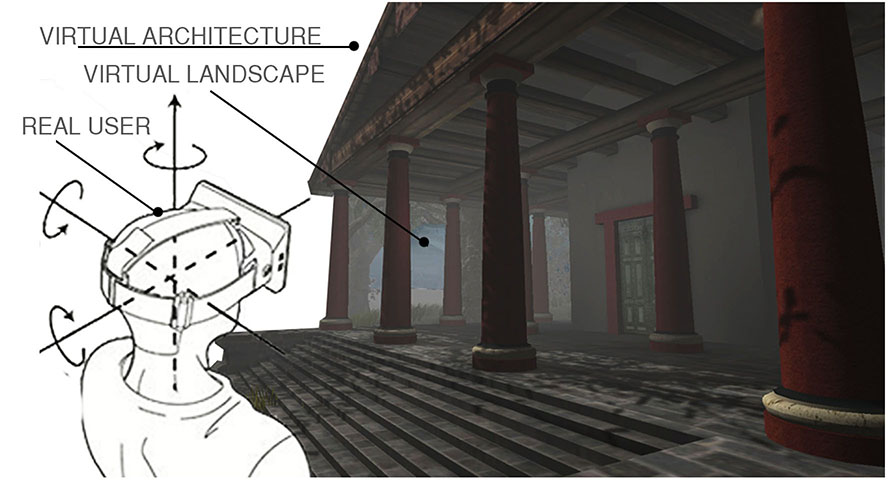
Multisensory Museum. A proposal for personalized virtual knowledge of the Vulci Archaeological Park
Abstract
Everyone interacts daily with external reality, and such behavior occurs naturally and spontaneously. The mechanism established is always multisensory and there are, in fact, multiple senses involved. Physical experimentation is natural in children’s behavior and is so strong that it also persists into adulthood. If this occurs in everyday life, why should it not also be so when experiencing the cultural heritage? Starting with this idea, this paper describes a proposal for a personalized multi-sensory and immersive itinerary for the Vulci Archaeological Park.
Keywords
References
Albisinni, P., & Maestro, R. (2002). Il disegno dell’architettura tra tradizione e innovazione, Collana Strumenti del Dottorato di Ricerca in Rilievo e Rappresentazione dell’Architettura e dell’Ambiente. Roma, Italia: Gangemi Editore.
Allen, J., & Lupo, E. (2012). Representing Museum Technologies. Milano, Italia: Mela Books.
Antinucci, F. (2007). Musei virtuali. Come non fare innovazione tecnologica. Roma, Italia: Laterza.
Antinucci, F. (2009). L’algoritmo al potere, Vita quotidiana ai tempi di Google, Roma, Italia: Laterza.
Bradburne, J. (2005). Heritage Interpretation. London, Gran Bretagna: English Heritage/Routledge.
Cameron, F. & Kenderdne, S. (2010). Teorizing Digital Cultural Heritage, a critical discourse. London, Gran Bretagna: The MIT Press.
Champion, E. (2010). Dialing up the past. In Cameron, F. & Kenderdine, S Teorizing Digital Cultural Heritage, a critical discourse (pp. 333-347). London, Gran Bretagna: The MIT Press.
De Luca, L. (2011). La Fotomodellazione architettonica. Palermo, Italia: Dario Flaccovio Editore.
Handler Miller, C. (2008). Digital Storytelling, A Creator’s Guide to Interactive Entertainment. Amsterdam, Paesi Bassi: Elsevier. Waltham, Massachusetts, USA: Focal Press.
Hazan, S. (2010). A crisis of Autority: New Lamps for Old. In Cameron, F. & Kenderdine, S Teorizing Digital Cultural Heritage, a critical discourse (pp. 133-147). London, Gran Bretagna: The MIT Press.
Ippoliti, E. (2013). Shedding light on the cultural heritage. The Ascoli Piceno experience. Roma, Italia: Aracne editore.
Kelly,L. & Russo, A. (1998). A Digital Collections: Museums and the Information Age. Oxford, Gran Bretagna: Butterworth-Heinemann.
Levy,P. (1997). Il virtuale. Milano, Italia: Cortina Raffaello Editori.
Migliari, R. (1991). Il disegno degli ordini e il rilievo dell’architettura classica: Cinque Pezzi Facili. In Disegnare, idee, immagini, 2, pp. 49-66.
Milekic, S. (2010). Tangible virtualities. In Cameron, F. & Kenderdine, S Teorizing Digital cultural Heritage, a critical discourse (pp. 369-388). London, Gran Bretagna: The MIT Press.
Moretti Sgubini, A. M. (1993). Vulci e il suo territorio. Roma, Italia: Quasar.
Moretti Sgubini, A. M. (2010). Vulci, Veio, Cerveteri, Tarquinia, Città d’Etruria a confronto. Roma, Italia: l’Erma di Bretschneider.
Serrel, B. (1996). Exhibit labels. An interpretative approach. California, USA: Alta Mira press.
Stopponi, S. (1985). Case e Palazzi d'Etruria. Milano, Italia: Electa Editrice.
Witcomb, A. (1995). Changing media, changing messages. In Museum, Media, Message. London, Gran Bretagna: Routledge.
Witcomb, A. (2010). The materiality of virtual technologies. In Cameron, F. & Kenderdine, S., Teorizing Digital Cultural Heritage, a critical discourse (pp. 35-48). London, Gran Bretagna: The MIT Press.
Zeki, S. (2007). La visione dell’interno. Torino, Italia: Universale Bollati Boringhieri.
.
Refbacks
- There are currently no refbacks.
Copyright (c) 2017
DISEGNARECON
ISSN 1828 5961
Registration at L'Aquila Law Court no 3/15 on 29th June, 2015.
Indexed in SCOPUS. Diamond Open Access. All papers are subjected to double blind peer review process by qualified reviewers.
Journal founded by Roberto Mingucci
